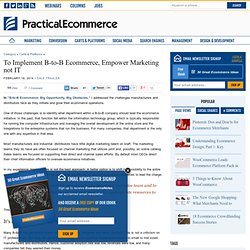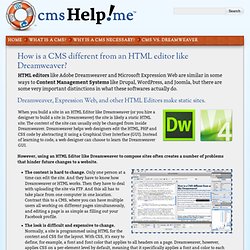

5 Reasons For Inbound Marketing To Your Current Customers. Are you missing opportunities?

Repeat Business It’s called a sales cycle. To maximize the return on the investment of setting up the infrastructure that makes it possible, it should be a recursive cycle of repeat business. It’s the most fundamental reason why you should perform inbound marketing on current customers, and it’s also the most practical. Just because your customers have finished one cycle doesn’t mean you can’t invest resources on increasing their customer lifetime value. Continuous Lead Nurturing It’s not a one night stand. The value customers bring to your organization does not lie on monetary value – each and every customer is also potentially an influencer.
Brand Positioning Even a single channel of inbound marketing can help better position your brand for existing customers. You don’t just automatically drop a subscriber from a list once they purchase your product or service. Monitoring Sentiment Your inbound marketing channels monitor various facets of your target market. Web Sites - Seven Dead Ends on Your Website. You work hard to drive traffic to your site.

Steering people toward your site is hard work. You combine search marketing, social media, and email marketing. You might even be paying good money for those visitors. But once you have them, are you making the most of those visits? Or is your site sending them down one-way, dead-end streets? Sadly, most websites are filled with dead ends. Here are seven blind alleys that are probably on your site right now. The following seven dead ends are all common, huge missed opportunities... 1. Amazingly, most marketing websites have pages that just stop. Great websites have pages designed specifically to gently guide visitors toward actions, toward next steps. Detour: Add calls to action at the bottom of your services pages, offering to answer questions, start a conversation, get in touch. 7 Metrics Every Marketer Should Check Weekly (And How to Improve Them)
As a marketer, tracking and analyzing data is an important part of the gig.

But there are so many different metrics you can track. Where do you begin? (And better, how do you ultimately improve your metrics once you understand them?) After you know what you want to track, you should consider how often you plan to review your metrics. And guess what - not all metrics should be treated equally. Why is it important to check some metrics weekly? In this post, we're going to cover some of the most important metrics you should track weekly. 1. Tracking the number of views you get per blog post is great way to get quick feedback on your blog articles. Using HubSpot's Page Performance, you can see how many views you got on each post, as well as your total view count. Want an extra tip? How to Improve Your Blog Views Measure blog post views to figure out which blog content is performing the best. Now use this information to plan out your next few weeks of content. To Implement B-to-B Ecommerce, Empower Marketing not IT.
In “B-to-B Ecommerce: Big Opportunity, Big Obstacles,” I addressed the challenges manufacturers and distributors face as they initiate and grow their ecommerce operations.

One of those challenges is to identify what department within a B-to-B company should lead the ecommerce initiative. In the past, that function fell within the information technology group, which is typically responsible for running the computer infrastructure and managing the overall development of the online store and the integrations to the enterprise systems that run the business. For many companies, that department is the only one with any expertise in that area. Most manufacturers and industrial distributors have little digital marketing talent on staff. The marketing teams they do have are often focused on channel marketing that utilizes print and, possibly, an online catalog. In my experience, however, this is not the best approach. This article will explain why. It’s about the Customer, Not Technology. How is a CMS different from an HTML editor like Dreamweaver? HTML editors like Adobe Dreamweaver and Microsoft Expression Web are similar in some ways to Content Management Systems like Drupal, WordPress, and Joomla, but there are some very important distinctions in what these softwares actually do.

Dreamweaver, Expression Web, and other HTML Editors make static sites. When you build a site in an HTML Editor like Dreamweaver (or you hire a designer to build a site in Dreamweaver) the site is likely a static HTML site. The content of the site can usually only be changed from inside Dreamweaver. Dreamweaver helps web designers edit the HTML, PHP and CSS code by abstracting it using a Graphical User Interface (GUI). Instead of learning to code, a web designer can choose to learn the Dreamweaver GUI. However, using an HTML Editor like Dreamweaver to compose sites often creates a number of problems that hinder future changes to a website. The content is hard to change. Drupal, WordPress, Joomla, and other Content Management Systems make dynamic websites.